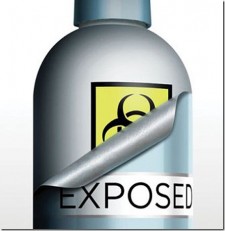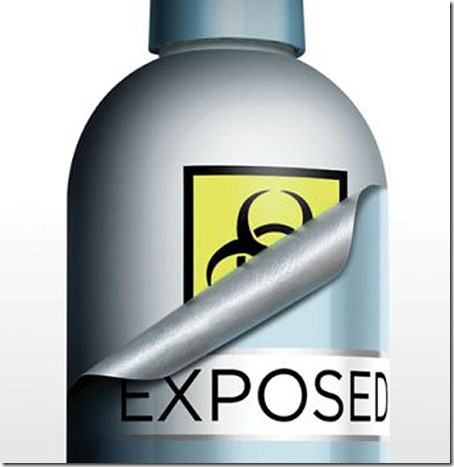 Women and a growing number of men, are dependent on the power of cosmetics and fragrances to give them a more youthful appearance, enhance their natural attributes, and make them feel good. We don’t think twice about what we put on our faces or bodies because we know the FDA protects us against poisons and carcinogens. However, the FDA isn’t the governing for cosmetics and personal care products.
Women and a growing number of men, are dependent on the power of cosmetics and fragrances to give them a more youthful appearance, enhance their natural attributes, and make them feel good. We don’t think twice about what we put on our faces or bodies because we know the FDA protects us against poisons and carcinogens. However, the FDA isn’t the governing for cosmetics and personal care products.
The Role of the CTFA and the CIR
The Cosmetic Toiletry and Fragrance Association (CTFA) regulates personal care products and pays chemists on the CIR, the Cosmetic Ingredient Review panel, to ensure the safety of those products. The scientists who decide what’s safe to release to consumers are surely biased due to their close connection with the manufacturers and corporations who belong to the CTFA. To test the veracity of the CIR’s findings, the Environmental Working Group (EWG) conducted a study to determine just how safe personal care products really are.
The Results
The results of the 2004 study revealed the safety margins set by the cosmetic and fragrance industry’s CIR panel were not even close to meeting consumer’s needs. About 62 percent of the 7,500 products tested by the EWG contained known and probable carcinogens, and nearly thirty percent contained possible carcinogens. There were actually 54 products the CIR recommended for removal from store shelves, yet these products were still being sold in the United States. This proved that not only did the CIR not work effectively in detecting dangerous chemicals but they also had little enforcement authority concerning them.
The EWG’s Most Wanted
Knowing these startling facts, how can you protect yourself from the harmful chemicals that might be present in your daily skin and beauty routine? Fortunately, there are only a few classes of harmful ingredients you need to watch for, and they are only present in a few types of personal care products. Awareness is key and careful selection of your skin products will go a long way.
FD&C and D&C Dyes and Bladder Cancer
Put FD&C or D&C dyes on your watch list. The EWG found that over 70 percent of hair coloring products contain these dyes, which are derived from coal tar. FD&C and D&C dyes have been tied to bladder cancer, and one study indicated that more than 19 percent of the cases of bladder cancer in Los Angeles in 2001 could be associated with permanent hair coloring use. The FDA does not consider coal tar derivatives dangerous enough to ban their use; however, it does recommend avoiding permanent hair coloring in order to reduce the risk of cancer.
The Solution
Instead, look for non-permanent hair colorings that don’t contain FD&C and D&C dyes. Henna and other natural hair coloring products don’t contain harsh chemicals. There are 30 percent of hair coloring products that don’t contain the harmful dyes. Online research will reveal the safest products to use if you are concerned about cancer causing ingredients. Also, remember that permanent hair coloring was only linked to about 19 percent of the hair coloring users. The odds that you may be in that margin are slim.
AHA and BHA and Skin Cancer
Other culprits are Alpha Hydroxy and Beta Hydroxy Acids (AHA and BHA) meant to reduce wrinkles, spots, and blemishes. However, the FDA has investigated these ingredients which have generated a number of complaints concerning skin injuries, such as burns and swollen areas. The FDA concluded that AHA and BHA were associated with double the UV-caused skin damage and a greater likelihood of skin cancer. The EWG study found only 10 percent of the moisturizers and 6 percent of the sunscreens tested contained AHA or BHA.
The Solution
Examine the ingredients of your sunscreen, moisturizer, anti-aging and skin formulas. If they contain AHA or BHA, you can protect yourself from skin cancer during use by applying a sunscreen that does not contain AHA or BHA. You may also want to consider switching to skin products that do not contain AHA or BHA whenever possible. Skin cancer is prevalent due to constant exposure to sun throughout your lifetime and limiting the chances for sun exposure will give you healthier skin and a healthier life.
Phthalates and Male Reproductive Damage
Phthalates are another chemical to be avoided. They are found in moisturizers, nail polish, and strengthen the fragrance in products. Unfortunately, this innocuous chemical can cause serious damage to the male reproductive system with results such as low sperm count and genital abnormalities. It can also cause birth defects and put the user at risk for cancer. Fortunately, the EWG located only four products with phthalate, and all of them were nail polishes. However, since phthalate is used in fragrances and fragrance-containing products, it is not required that it be listed as an ingredient due to laws protecting proprietary formulas and fragrance ingredients.
The Solution
Consumer advocates are working to ensure that phthalate containing products list this dangerous chemical. The amounts of phthalate used in most products are in such small amounts that they are highly unlikely to cause injury. The list of nail polishes that contain phthalate can be found on www.ewg.org. On the EWG website, you can look up any of the 7,500 tested personal care products and find their potential health risks.




